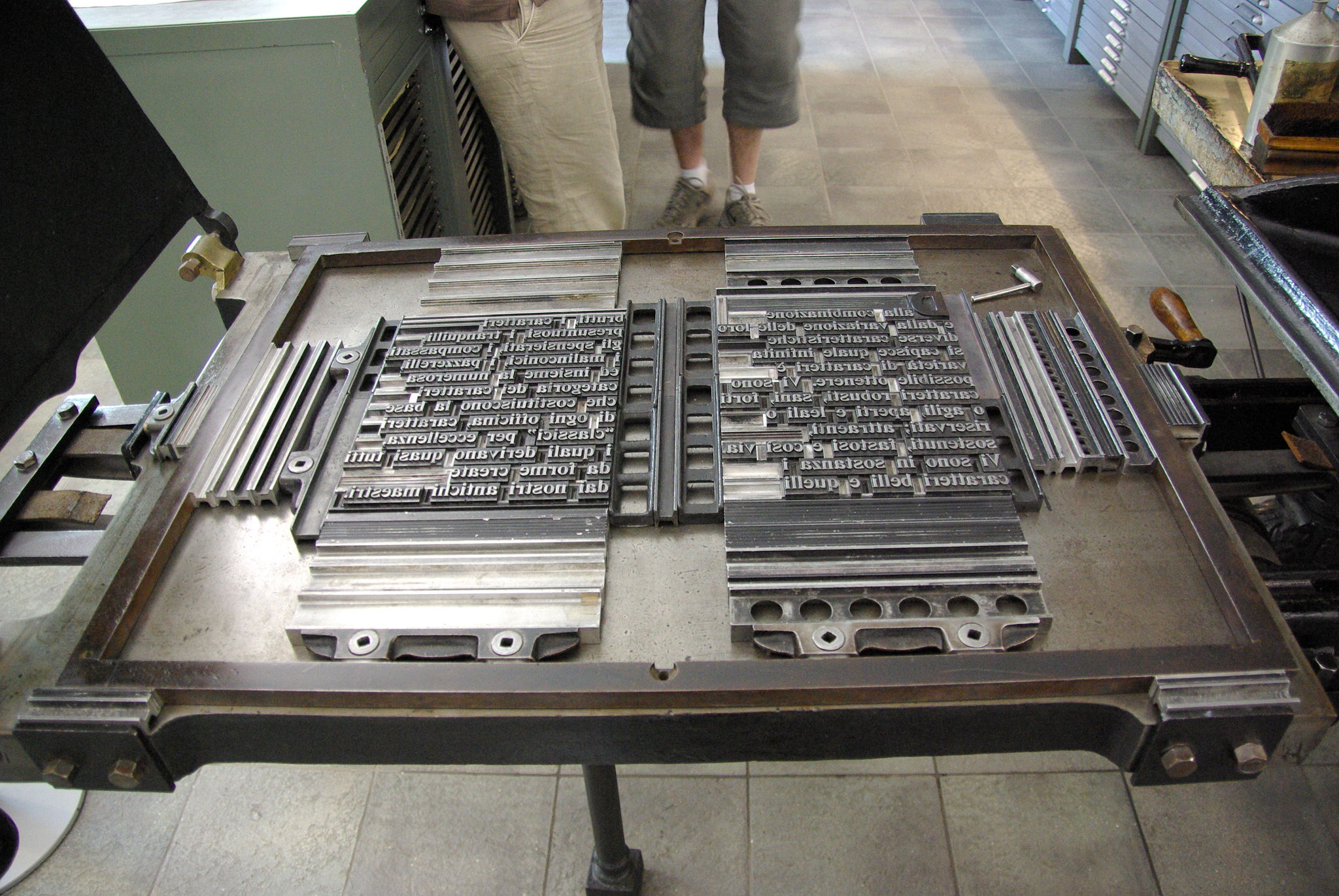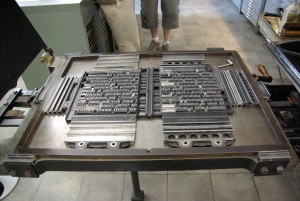Gutenberg’s moveable type impacts reading audience
In the early 15th century, bookmaking was a labour-intensive process requiring dedicated scribes to hand-copy text and illustrations. The invention of moveable type by Johannes Gutenberg during 1445 AD, caused a major shift from meticulous single manuscript work to a mechanized printing process, allowing multiple print book copies to be quickly reproduced to a vast audience. Durable, interchangeable type revolutionized printing processes throughout Europe; building upon previous Chinese print technologies including block printing, rag paper, oil-based inks. (Butler, 2007)
These new print production technologies meant that books would be more accessible and affordable to the general public. Ordinary citizens no longer had to rely on others to interpret text as they began to access books themselves. They became readers.
Technology remediation relating to writing happens when, “a newer medium takes place of an older one, borrowing and reorganizing the characteristics of writing in the older medium and reforming its cultural space.” (Bolter, 2001) As book forms evolve over time from scroll to codex, from hand-written to printing press, this in turn influences how readers relate to text. Printed texts became far easier to read than manuscript texts. (Ong, 1982)
Book language began to embrace local dialects, while the book’s appearance gained new text features with a more consistent design appeal. The printing press changed text appearance, leading to more standardized spelling, pagination, punctuation, word and letter spacing, ultimately changing the reader’s experience. New print features vastly improved readability and function. Gutenberg’s printing press required consistent paper sizes of a constant, smoother quality. Notable text features adopted included tables of contents, printer’s marks, and rudimentary title pages. (Clement, 1997) The book was radically changing its form.
“The emergence of a literate middle class in the latter Middle Ages created a demand for new types of books. These tended to be popular works of a recreational or technical nature, which were often in the vernacular,” or the everyday language spoken by ordinary people. (Clement, 1997) A dramatic increase in numbers of mass-printed books reached half a million by the year 1500, with many written in local dialects. Books printed in everyday language yielded a variety of unexpected results.
As the middle class acquired new literacy levels, individuals began to challenge traditional forms of governance, religion and education. The book in highest demand was the Bible, which people read while forming new personal interpretations. This led to an undermining of the Church’s authority. Traditional Latin texts shifted to common European languages, thereby eliminating at least one barrier to becoming educated. Affordable, accessible books gave rise to self-taught individuals.
Readers who could simultaneously access literature also led to a cohesive movement that facilitated more rapid scientific advances through information exchange. History scholars may have underestimated the impact of the printing press as an agent of change, by overlooking a widespread communications revolution while printed books which had a unifying effect, “among the intellectual activities made possible by printing was the exact duplication of technical work, which allowed the expansion of data pools in astronomy, botany, and geography.” (Eisenstein cited by Kaestle, 1985)
Gutenberg’s moveable type and printing press inventions paved the way for increased knowledge access by changing how readers related to text, much in the same way that today’s computer age allows for improved information access. On-going text production remediation continues to influence our interactions with text, as we find new ways to create knowledge as authors, producers and publishers, ultimately shifting the balance of power of authorship.
References:
Butler, C. (2007) The invention of the printing press and its effects. Retrieved from Internet, http://www.flowofhistory.com/units/west/11/FC74
Clement, R. W. (1997). Medieval and Renaissance Book Production: The Printed Book. In R. Clement (Ed.) Books and Universities. Retrieved from Internet, http://www.the-orb.net/encyclop/culture/books/medbook2.html
Clement, R. W. (1997). The Online Reference Book for Medieval Studies. Medieval and Renaissance Book Production: The Manuscript Book. Retrieved from Internet, http://www.the-orb.net/encyclop/culture/books/medbook1.html
http://www.the-orb.net/encyclop/culture/books/medbook2.html
Kaestle, C. F. (1985). The history of literacy and the history of readers. Review of Research in Education, 12, 11-53. doi:10.2307/1167145
Ong, Walter. (1982.) Orality and Literacy. Chapters 4 and 5, “Writing Restructures Consciousness” and “Print, Space and Closure”.
Image sources:
Bjornard, K. (1982) Lock up on a metal Gutenberg-style press, [CC BY-SA 2.0 Retrieved from Internet http://creativecommons.org/licenses/by-sa/2.0)], via Wikimedia Commons
Gutenberg Bible: comparing the texts. British Library. Retrieved from Internet http://molcat1.bl.uk/treasures/gutenberg/search.asp



Not entirely sure if you will be able to open this link unless you are signed into Facebook, but here is a lovely little video of a handmade book being produced. 3-1/2 minutes in length. For me, this is a beautiful little meditation.
https://www.facebook.com/Tenthandfourth/videos/342953712577550/